Andrew’s Story: Securing a settlement after a life-changing bicycle accident
Andrew’s story:Securing a $945,000 settlement after a life-changing bicycle accident Since this story was written, Andrew has sadly passed away. His voice was a call
Have you been involved in a car accident? How can you determine who is at fault?
It is often difficult to determine who is at fault in car accident cases. In some cases, just one party may be fully responsible. In others, responsibility may be shared between the parties — referred to as contributory negligence. Even in some cases, no party is ultimately responsible.
In any case, the degree of responsibility you hold will influence the amount of compensation you’re entitled to.
In this article, we’ll discuss contributory negligence, blameless accidents, and other negligence-determining criteria, helping you to better understand how fault is determined in motor vehicle accidents.
All drivers have a duty to other road users to take reasonable care — referred to as their ‘duty of care’.
If it can be determined that anyone involved in the accident was not taking reasonable care, they can be found negligent and at fault.
The top identifiers of negligence consist of:
If you are hit by another driver and they are found at fault, you can make a claim against them for damages. This can include any losses resulting from the accident, including damage to your vehicle.
However, if your actions also played a part in the accident, both drivers may be found at fault. This is referred to as ‘contributory negligence,’ and the responsibility for the accident may be shared between you and the other driver in varying proportions. In such a case, you may be responsible for bearing part of the cost of the damages.
Call us for confidential, free advice.
Suppose you’re entering an intersection and you have the right of way. Another driver disregards your right of way and also enters the intersection, causing a collision. However, you were also speeding when you entered the intersection. A magistrate therefore finds you to be 30% responsible for the accident, while the other driver is 70% responsible.
The claims for damages are adjusted according to the percentage of fault each of you is responsible for. If the other driver’s claim for damages is greater, this could mean you end up owing the other driver damages and having to repair your own vehicle, even though your contributory negligence was less.
Occasionally, no one may be found at fault for an accident.
If a driver has a heart attack or stroke while driving, this may be a blameless accident. If the accident is caused by an animal running into the road, a claim may be possible against the owner of the animal, provided the animal is domesticated; otherwise, this may also be a blameless accident.
States differ slightly in how they adjust compensation based on contributory negligence.
Queensland car accident claims are governed by the Motor Accident Insurance Commission (MAIC) which states that those who are fully at fault for the accident cannot file a CTP claim for compensation. However, if you are only partially responsible, you may still be entitled to compensation.
The State Insurance Regulatory Authority (SIRA) governs car accident compensation for New South Wales. It states that you may still be entitled to statutory benefits (which refer to coverage for medical treatment, domestic care, and other financial needs) for a period of 52 weeks, irrespective of fault. They also state that common law entitlements (which refer to intangible losses, like psychological harm) are reduced proportionately to the degree of contributory negligence.
Other states again differ further — each with its own legislation determining how contributory negligence plays into the compensation equation.
For personalised advice, we recommend speaking to a local personal injury lawyer. They’ll assess your injuries, inform you of what you may be entitled to, and let you know the best legal pathways forward.
Since there are so many variables at play, you should seek the advice of a legal expert before filing a claim in case of a car accident.
If you have suffered damages as the result of a collision, contact GMP Law’s solicitors for advice before proceeding, and do not admit fault.
Click here to book a free, no-obligation consultation with a car accident lawyer.
Andrew’s story:Securing a $945,000 settlement after a life-changing bicycle accident Since this story was written, Andrew has sadly passed away. His voice was a call
Mansour’s story:Securing $870,000 settlement after a heavy vehicle collision This image does not depict our actual client. Mansour’s story In early 2024, Mansour’s life was
Case Overview We acted for a client from Coffs Harbour who was involved in a serious motor vehicle accident. The driver failed to give way
In the spirit of reconciliation GMP Law acknowledges the Traditional Custodians of country throughout Australia and their connections to land, sea, and community. We pay our respects to their Elders past, present, and emerging, and extend that respect to all Aboriginal and Torres Strait Islander peoples today.

Your location is currently:
Please wait while you are redirected to the right page...